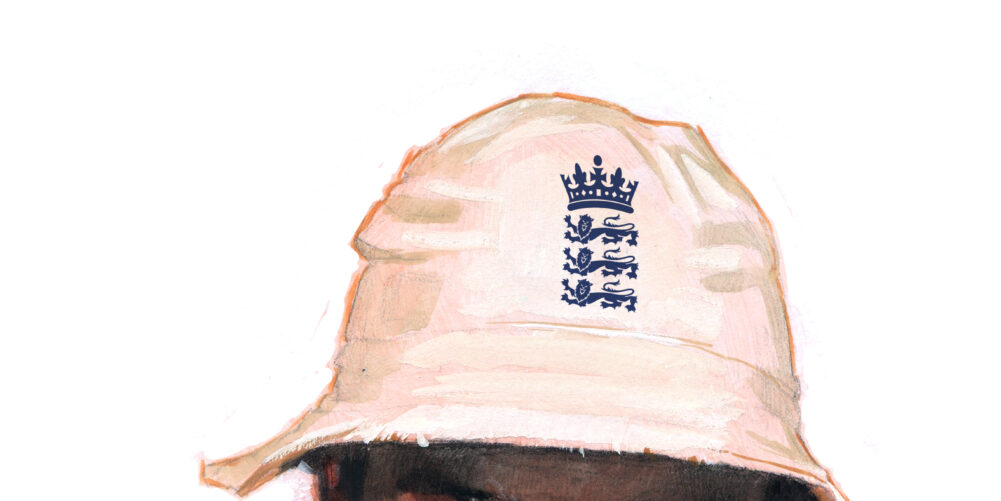The first cricket related Christmas present I ever got was a scorers’ book, although I’d only got through one pencil (mainly recording Boycott’s dots) when I decided that scoring was a surefire way of killing off your brain cells.
A feeling reinforced in later life when I made the fatal error of accepting a lift to a match from a county scorer, and discovered that his two topics of conversation were the proper way for an umpire to signal a leg bye, and how to grow tomatoes.
Mind you, you’ve got to admire the way that scorers, especially in this computerised era, come with fascinating statistics after almost every ball.
“And that makes Bloggs the tallest left-handed batsman to reach double figures with ten consecutive singles to fine leg on a Sunday morning at Old Trafford since Blenkinsop in 1899.”
Cricket and statistics have always been inextricably entwined, and every now and again one pops up to remind us of Disraeli’s view on the latter.
And I may not have been alone in thinking that when Jonny Bairstow this week claimed the record for the highest number of wicketkeeping Test dismissals in a calendar year, it was QED for the former PM’s claim that there are “lies, damned lies and statistics”.
Statistically, in terms of 68 dismissals – 65 catches and three stumpings – Bairstow should appear on any list of England’s finest wicketkeepers. Which is, of course, utter tosh.
A more accurate statistic would be how many dismissals he ought to have had, especially given the amount of cricket now played in a calendar year, and while it would be remiss not to acknowledge that Bairstow has improved, it’s been from a pretty modest starting point.
Not so very long ago, when a cricket ball was caught by an Alan Knott, a Bob Taylor, or a Jack Russell, it didn’t so much sound as though it was entering a pair of gloves as a 15-tog duvet.
But the role has since changed so much that a wicketkeeper is now selected on the basis that once he’s fulfilled the primary objective of scoring a lot of runs, why not strap on a pair of gloves and see if he catches more than he drops.
You could even go so far as to venture that catching and stumping actually comes third in the list of desirable attributes, not just behind scoring runs, but also greeting every delivery from whoever is bowling with a banshee howl, or some similar noise intended to convey that the fortunate batsman has somehow managed to survive a vicious hand grenade.
Even when the grenade was last seen soaring over the pavilion and heading for the High Street.
Bairstow made two lbw appeals in one over against the Indian captain Virat Kohli in the last Test match, both of them to deliveries hitting more or less the middle of the bat, and when Ravindra Jadeja clipped a ball from Moeen Ali firmly to midwicket there was, for reasons impossible to fathom, an anguished cry of “Oooooh!” from behind the stumps.
This, though, is now the modern way. Matt Prior was just the same, and even when England’s bowlers would spend an entire day getting bashed around, Prior’s “ooh!” “ahh!” and “well bowled!” count was so high that it’s a miracle his tonsils didn’t wear out.
Which is why, despite the current fuss and nonsense over Faf du Plessis and lollygate, they can’t ban cricketers from sucking sweets, for the simple reason that your modern wicketkeeper couldn’t function without a regular supply of throat lozenges.
It’s hard to pinpoint exactly when the primary attribute for a Test match wicketkeeper switched from holding catches to scoring runs, but it certainly applied when England won the Ashes in Australia in 1986-87. Bruce French went as No.1, with Jack Richards earmarked to do the job in the one-dayers, but England’s batting was so hopeless before the first Test that Richards, the superior batsman, played in all five in the series.
French later had a spell as England’s wicketkeeping coach, including plenty of personal hands-on tuition with Prior, whose early technique appeared to have been honed as a cymbals player in a brass band. But with French’s assistance, Prior had actually become a very good wicketkeeper by the time he retired.
Alec Stewart was another who learned the trade on the job, so to speak, keeping the likes of Russell out of the side, and, like Prior, he eventually became a very good keeper. Likewise, for Australia, Rod Marsh, Ian Healy, and Adam Gilchrist. It’s a bit like being a plumber’s mate. You find out how the job is done by doing it, and eventually, after the occasional flood, and blowing up a few boilers, you get the hang of it.
Mind you, maybe this wicketkeeping business isn’t quite as difficult as we think. When Prior was injured against the West Indies at Chester-le-Street in 2009, Paul Collingwood took the gloves, and apart from catching Shivnarine Chanderpaul he only gave away eight byes as England completed an innings victory.
Then again, in 1986, when the regulations on substitutes were less strict than they are now, England actually used four wicketkeepers in the same Test against New Zealand at Lord’s.
First French, who got injured, then Bill Athey, who was in the side, followed by Bob Taylor, who was busy entertaining corporate guests over canapés in a hospitality box when he got the summons, and finally Hampshire’s Bobby Parks.
It was Parks’ dad, Jim, though, who unwittingly provided one the great wicketkeeping stories, in a Somerset v Leicestershire Gillette Cup game at Taunton in 1973. The visitors were all but beaten at 50-5 chasing 213 to win, but when Parks got injured Brian Close went behind the stumps.
Close being Close, he decided to dispense with Parks’ gloves and keep wicket in his bare hands, whereupon the visitors squeaked home by two wickets with the help of 14 byes.
Most of them tipped, goalkeeper style, around the post, or over the bar. Dear old Closey. If he’d kept wicket for England he might not have got 68 victims in a calendar year – but he’d almost certainly have seen off 68 with rebounds.
This piece originally featured in The Cricket Paper, December 2 2016
Subscribe to the digital edition of The Cricket Paper here












